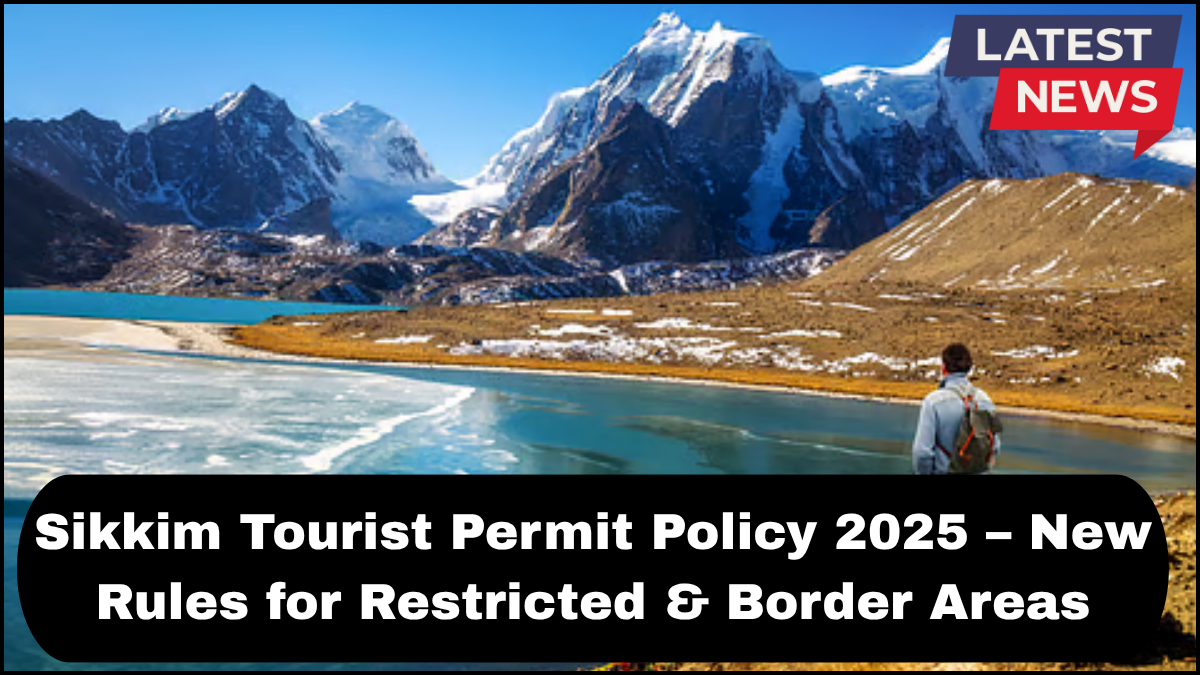The Government of Sikkim has introduced major updates under the Sikkim Tourist Permit Policy 2025, aiming to strike a balance between promoting tourism and safeguarding sensitive ecological and border zones. With increased footfall in recent years, especially in fragile regions like North Sikkim’s restricted access areas, the revised rules emphasize responsible travel, enhanced security, and sustainable practices. Here’s everything travelers need to know before planning their trip to Sikkim in 2025.

Overview of the 2025 Permit Policy Changes
Under the new policy, both domestic and international tourists are required to follow stricter protocols when visiting protected and border regions. These updates are primarily focused on the following:
-
Enhanced documentation and pre-approval requirements.
-
Digital permit processing to streamline applications.
-
New access limits for highly sensitive areas.
-
Revised eligibility criteria for foreign nationals.
The Sikkim Tourist Permit Policy 2025 aims to preserve the region’s ecological integrity while ensuring tourists experience its natural beauty without compromising security or cultural values.
Areas Requiring Special Permits
Sikkim is divided into various zones based on accessibility and proximity to international borders. The following areas continue to require permits under the 2025 policy:
-
North Sikkim (Lachung, Yumthang, Lachen, Gurudongmar Lake): These areas fall under the Protected Area Permit (PAP) regime, and access is now further limited to reduce ecological strain.
-
East Sikkim (Tsomgo Lake, Baba Mandir, Nathula Pass): Permits remain mandatory, with additional vetting for foreign nationals.
-
West and South Sikkim: Generally open to tourists, but some trekking routes near borders may now require temporary access passes.
Key Permit Categories and Their Requirements
Protected Area Permits (PAP)
These are mandatory for all foreign tourists visiting areas within 5 km of the international border, particularly in North Sikkim’s restricted access zones. In 2025, the following changes apply:
-
Must be obtained through a registered tour operator.
-
Minimum group size: 2 foreign nationals (solo travelers not allowed).
-
Valid passport, visa, and itinerary are compulsory.
-
Travel only allowed with pre-approved guides and drivers.
Restricted Area Permits (RAP)
RAPs continue to be required for specific locations, particularly those closer to military posts. Indian nationals also need RAPs for certain locations beyond Chungthang in North Sikkim.
Inner Line Permits (ILP)
ILPs remain necessary for all foreign nationals entering Sikkim. This can now be applied online through the official state tourism portal, making the process more accessible and transparent.
Digital Permit System: A Major Step Forward
One of the most significant reforms in the Sikkim Tourist Permit Policy 2025 is the introduction of an integrated digital permit issuance system. Travelers can now apply for PAPs, RAPs, and ILPs online, upload documents, and track approvals in real time.
This change benefits tourists by:
-
Reducing the need for in-person visits to district offices.
-
Ensuring faster processing.
-
Improving coordination between tourism, immigration, and defense departments.
Environmental Regulations and Tourist Limits
To minimize the environmental impact, the government has introduced daily visitor caps for high-altitude destinations like Gurudongmar Lake and Zero Point. Tourists may need to pre-book permits weeks in advance during peak seasons. Additionally, single-use plastics have been completely banned in all protected zones.
Eco-tourism practices are being encouraged, and all operators are required to comply with new sustainability guidelines. This includes:
-
Waste management protocols.
-
Mandatory eco-briefings for tourists.
-
Use of licensed eco-guides.
Foreign Nationals: What’s New in 2025?
The updated policy brings in stricter norms for foreign visitors:
-
Only select nationalities are allowed to apply for PAPs in border regions.
-
Travel to areas like Nathula Pass remains strictly prohibited for foreign nationals.
-
Hotel bookings in restricted zones require prior verification.
-
Real-time tracking via digital entry logs at permit checkpoints.
Role of Tour Operators and Local Authorities
Registered travel agencies are now legally responsible for verifying tourist documents, ensuring compliance, and coordinating with the permit authorities. Local authorities are empowered to deny entry or cancel permits in case of any violation.
FAQs: Sikkim Tourist Permit Policy 2025
Q1: Do Indian citizens need permits to visit North Sikkim?
Yes. While the ILP is not required for Indian nationals, visiting areas like Lachen, Lachung, and Gurudongmar Lake still requires a Protected Area Permit.
Q2: Can foreign tourists visit Gurudongmar Lake in 2025?
No. As per the new policy, foreign nationals are not allowed beyond Thangu in North Sikkim due to security concerns.
Q3: How far in advance should tourists apply for permits?
At least 15 days in advance during peak seasons (May–June and October). Digital applications help streamline this process.
Q4: Are permits required for treks in West Sikkim?
Yes, depending on the trail’s proximity to the border. It’s best to consult with a registered trekking agency.
Q5: Can permits be canceled?
Yes. Permits can be revoked on grounds of misinformation, document forgery, or non-compliance with environmental or security guidelines.
click here to learn more